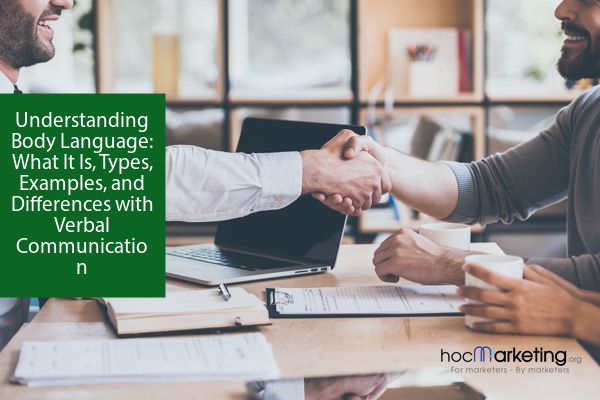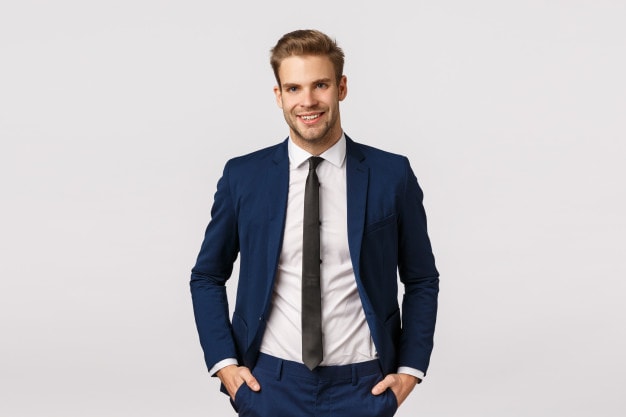
Understanding Body Language: What It Is, Types, Examples, and Differences with Verbal Communication

Mastering body language is key to successful communication and building strong relationships Discover the different types of body language, their implications, and how to project positive signals through practical examples
Having a positive and effective body language is a crucial social skill that is often underrated, yet it can set you apart from others and help you achieve more favorable outcomes in your interactions. It is essential to understand the benefits of reading and utilizing conscious body language if you want to increase your success rate. Nowadays, more and more people are learning how to read and adjust their body language to become healthier, more professional, and successful.
Our body language is crucial in shaping how others perceive our personality. Understanding the messages conveyed by our physical actions can greatly enhance our overall image. Ultimately, body language is a powerful form of communication that complements and strengthens our verbal communication, as actions often speak louder than words.
:
This article aims to provide a comprehensive understanding of the significance of body language in both personal and professional settings. It will delve into the various forms of positive and negative body language and how they can impact one's overall appearance. Let's dive in without delay.
As per an analysis, around 93% of our impression on others depends on the language that our body speaks, and only 7% of the impression depends on what you verbally state.
Elite individuals possess a certain aura that draws others towards them. Their body language exudes confidence and power, which is why people are naturally attracted to them. They understand that verbal communication is not as important as non-verbal cues such as gestures and posture.
Moreover, people tend to form quick judgments about others within the first few moments of meeting them. This is why elite individuals are able to captivate others so effortlessly.
Understanding the impact of non-verbal communication goes beyond basic posture and eye contact. It involves effectively connecting with others in a matter of seconds. To exude a captivating presence, it's important to master positive gestures and postures associated with impressive body language. In this article, we will explore some of the best practices for developing the right nonverbal skills to enhance your overall personality.
Introduction
Non-verbal communication plays a crucial role in conveying messages, and body language is an essential component of it. It involves the use of physical behavior, such as gestures, posture, and facial expressions, to communicate. Despite being subtle, it is often the most powerful form of communication as it conveys a wealth of information. Moreover, it is often done subconsciously, making it even more authentic.
Body language can be equated to signs, and mastering the ability to interpret them can aid in comprehending the entirety of a message being conveyed. Additionally, being able to adjust one's own body language can ensure the delivery of the intended message to the recipient. Studies reveal that body language is responsible for roughly 60 to 65% of all communication in our day-to-day lives.
Repeated use of body language can convey messages with clarity, build trust, and reinforce the point you are making.
Having a strong understanding of various types of body language is essential to effectively communicate with others. By being mindful of your own nonverbal cues, you can avoid sending mixed messages and convey your intended message more effectively. Additionally, incorporating intentional and consistent body language can enhance the impact of your verbal communication.
Body language has the ability to convey a message without the need for verbal communication and can often communicate more effectively than words alone. When utilized correctly, it can be the most impactful tool for leaving a lasting impression. In fact, it only takes a mere seven seconds to make an impression, and by utilizing proper body language, one can easily gain approval and make a positive impact.
What is body language?
Before humans developed the ability to speak, body language and non-verbal communication were the primary means of conveying messages. Even today, it remains a crucial form of communication within the animal kingdom, particularly among non-human primates. By studying these creatures, which are considered to be our closest ancestors, we can gain valuable insights into the evolution of body language and its role in facilitating communication.
Many scholars suggest that the necessity for communication led to the evolution of body language. Interestingly, there are several parallels between the body language employed by animals and humans. For instance, a simple touch on the hand can be interpreted as a signal to halt, while pouting is commonly recognized as an indication of sadness.
Why is body language important?
Body language can be a complex subject, as there are various types of it, each with its own unique meanings. Additionally, different people may interpret body language in different ways. One of the primary components of body language is facial expressions.
Our facial expressions can communicate a vast range of emotions, both consciously and unconsciously. From joy and sorrow to shock and disgust, as well as confusion, disdain, excitement, and fear, the emotions we express through our faces are universal across all cultures. They play a crucial role in building trust between individuals, as they help us assess whether we can rely on someone and enable us to establish trust with others.
Rewritten:
Gestures encompass the subtle movements and signals of our body, such as hand gestures made while engaged in lively conversation. They are often employed during confrontations and when attempting to assert a point with force.
Some gestures are made consciously and can mean different things in different cultures. So it is essential to be careful with them.
3. Posture and body movement
This refers to the way people walk, stand, sit, or hold their head. The way a person carries himself or herself communicates a lot of information.
4. Eye contact
ing someone appropriately can also convey a lot of meaning in non-verbal communication. A pat on the back can show support or congratulations, while a hug can express love or comfort. However, it is important to be aware of cultural and personal boundaries when it comes to touch.
Touch can communicate a lot of information. Handshakes, hugs, grips on the arm, etc. are all a part of this.
6. Space
Maintaining appropriate physical distance is crucial in non-verbal communication to ensure that the other person feels comfortable and respected. While touch can convey important messages, it is important to be mindful of personal space boundaries. Edward T. Hall offers valuable insights on this topic, highlighting four distinct levels of social distance that apply in various scenarios.
A closer proximity, ranging from 6 to 18 inches, signifies an intimate relationship and a greater degree of comfort between two individuals. Personal distance, on the other hand, typically occurs between family members or close friends and ranges from 1.5 to 4 feet.
Social distance: 4 to 12 feet (this is often the case between acquaintances)
Public distance: 12 to 25 feet (this is often used in public speaking situations)
The evolution of body language
When it comes to communication, body language can say a lot. Positive body language can give off a sense of warmth and openness, making others feel comfortable and at ease. On the other hand, negative body language can signal negative emotions and thoughts, making a person seem unapproachable or even hostile. It all comes down to the gestures and signals we give off.
Positive examples:
Palms open and facing upwards.
Head tilted to one side.
Stroking the chin
Direct eye contact
Firm handshake
Stand straight with shoulders back.
Leaning in
Nodding the head
Aligning body with the person, you are talking
Keeping legs apart a bit instead of crossing them to show you are relaxed
Lean a bit to show focus
Mirror the body language of the person you are interacting
Use hands to gesture while speaking
Keep your arms relaxed
Know different cultural greetings
Use laugher to lighten the mood
Monitor your voice
During meetings take notes
Negative examples:
Nail-biting
Tapping one’s fingers
Placing fingertips together
Locked ankles
Fidgeting with hand or arm accessories
Sit on the edge of one’s seat
Arms crossed over the chest
Hand placed on the cheek
Touching the nose
Head in hands
Pulling the ear
Avoiding eye contact
Overusing hands
Poor posture
Looking around the room
Staring at your phone
Not listening
Talking too fast
Invading personal space of others
Lacking response
Excessive use of the word ‘But’
Closed off body language
Furrowed brows
Slumping
A too weak or Too firm handshake
Different types of body language and their implications
Our body language is a reflection of our inner thoughts and feelings, often expressed unconsciously. But with some conscious effort, we can regulate certain aspects of our body language to convey a positive message and make a good impression.
Maintaining a positive and welcoming demeanor in various aspects of our lives is crucial, and one way to achieve this is by projecting positive body language. A key aspect of positive body language is making a great first impression, which can significantly impact how others perceive us. To ensure a positive first impression, here are some tips to consider:
Adjust your attitude and use it wisely
Make eye contact regularly
Smile more
Watch your posture and try to make it positive and upright
Lean in slightly
Shake hands and use open hand gestures
Relax your body
Final Thoughts!
Our body language speaks volumes in our daily interactions and often conveys more than words ever could. As primates, it is ingrained in us to communicate through non-verbal cues, such as eye contact and posture, which can reveal a great deal about our thoughts and emotions. These cues are often picked up effortlessly in most situations.
Having a thorough comprehension of the various types of non-verbal communication and the skill to recognize them is imperative for achieving success both in one's professional and personal life. Have you ever experienced a situation where body language played a pivotal role in obtaining a positive outcome? We welcome you to share your experience with us in the comment section.











